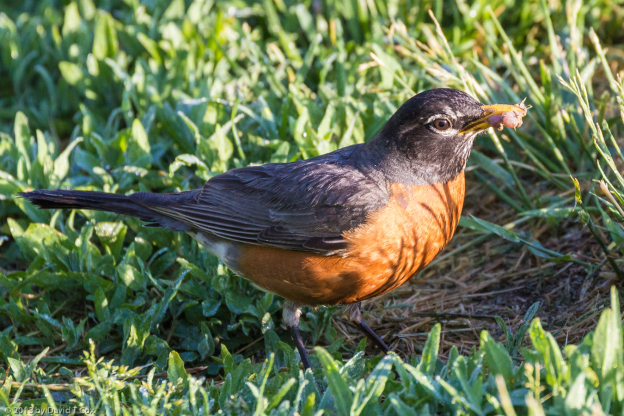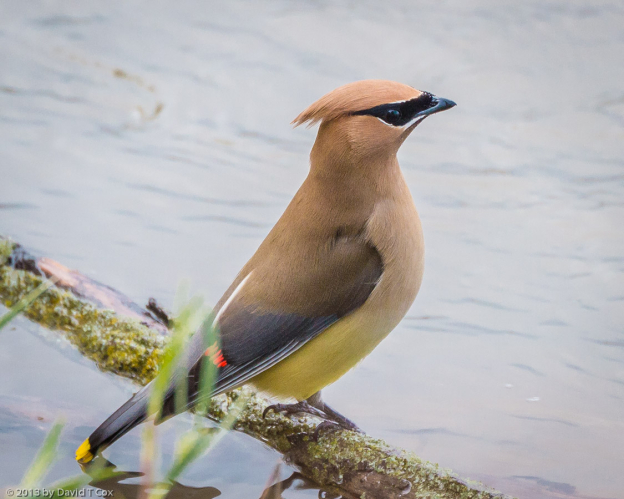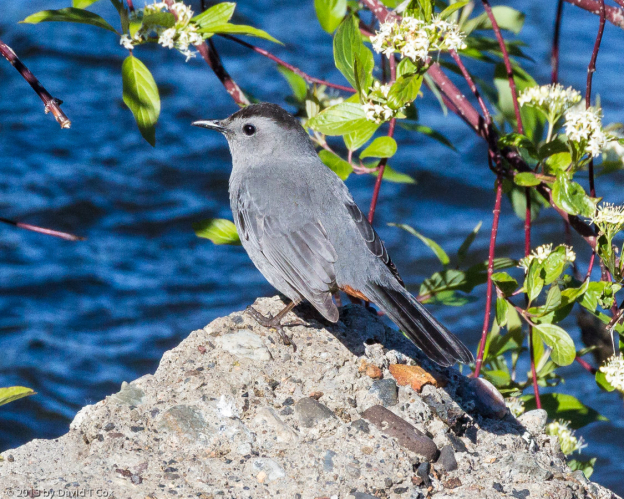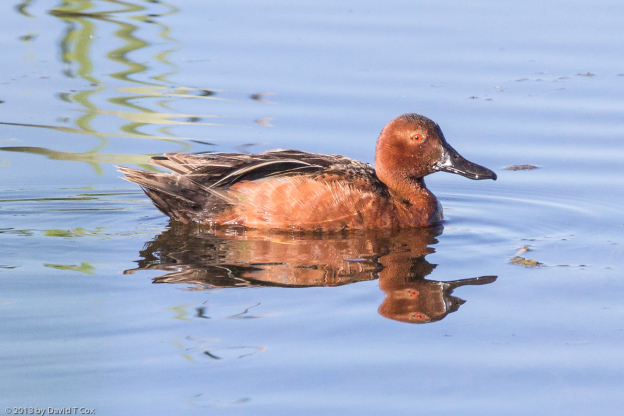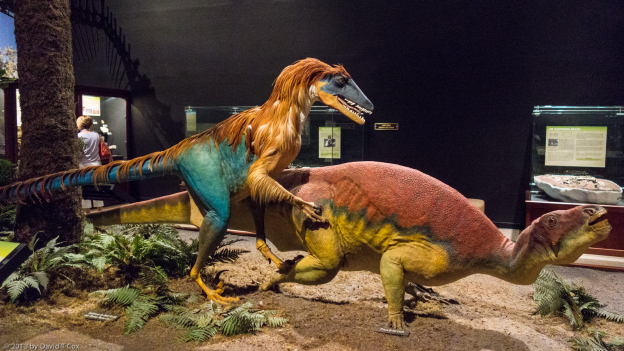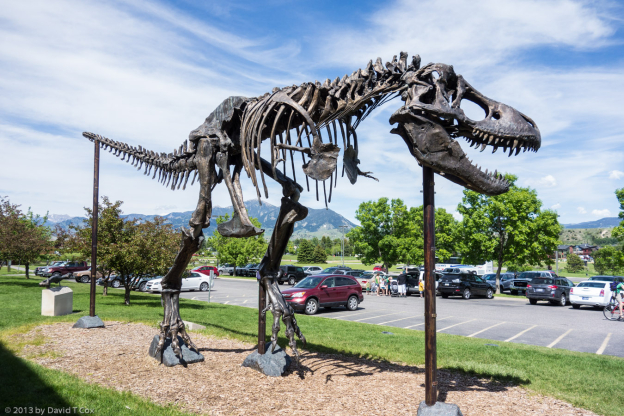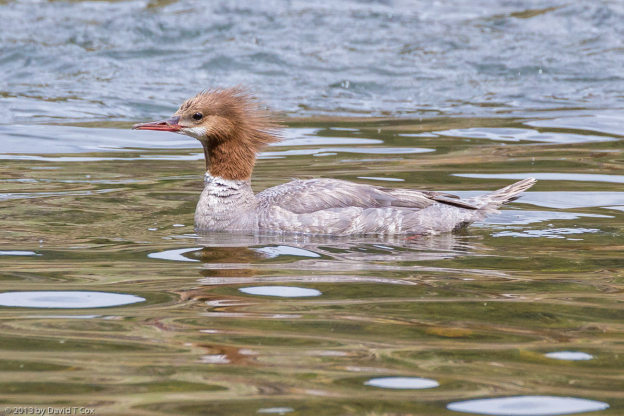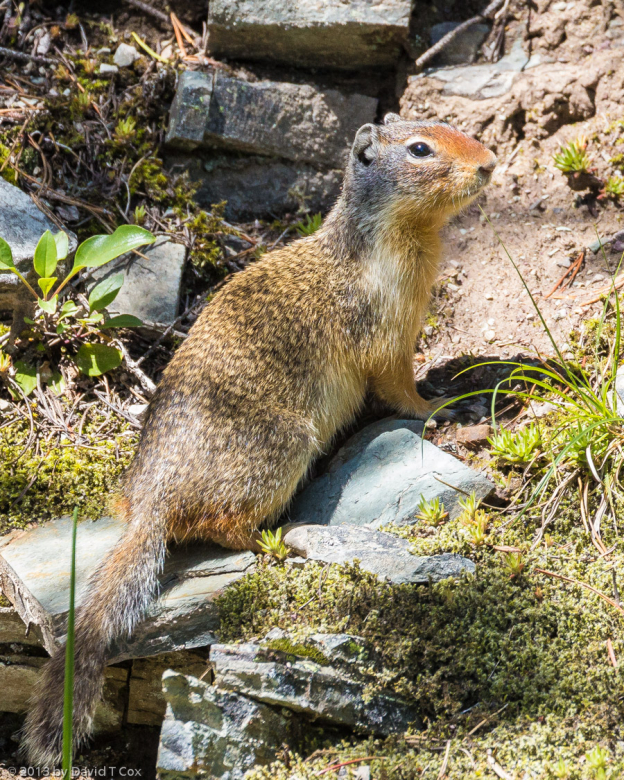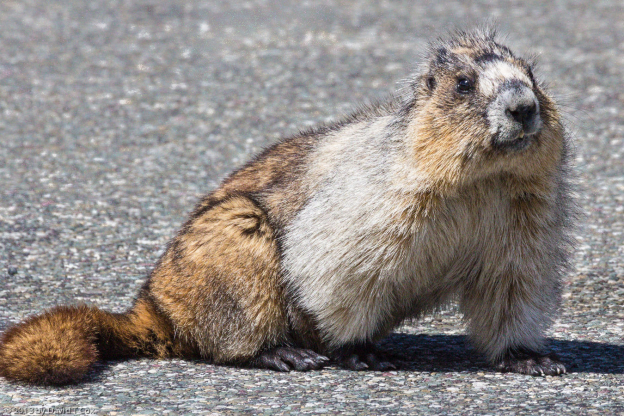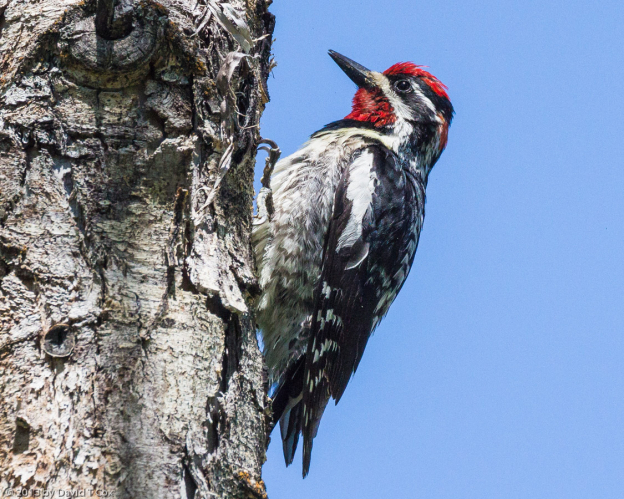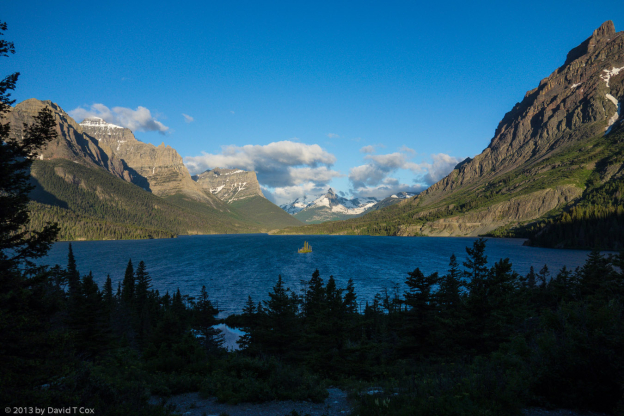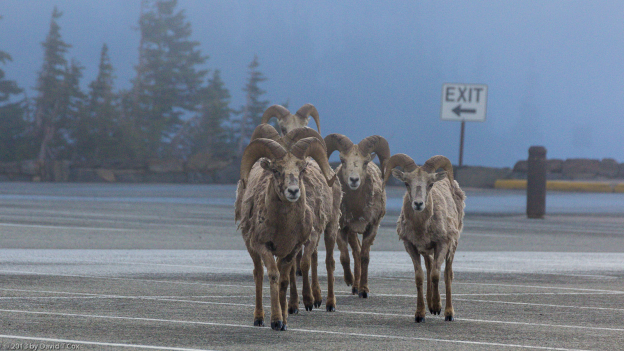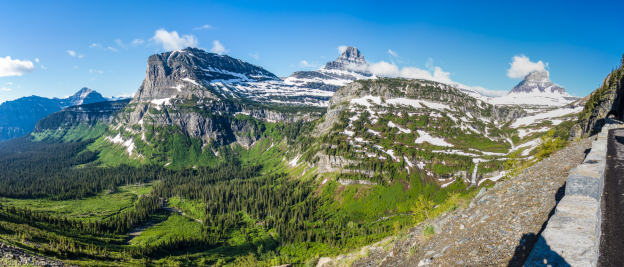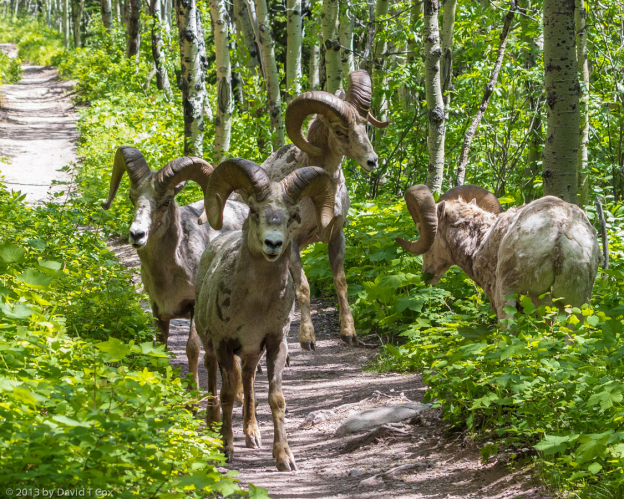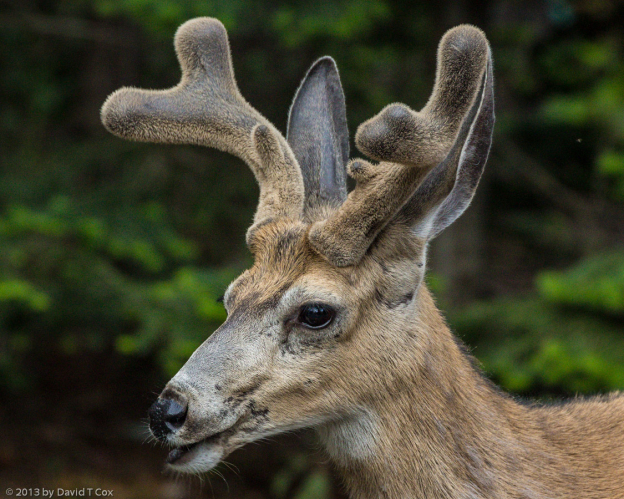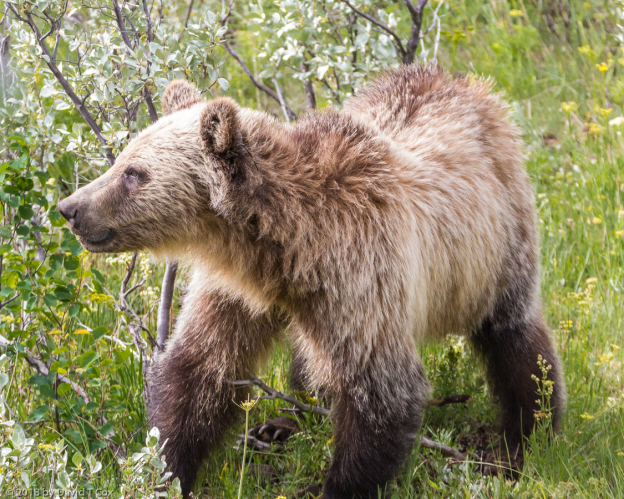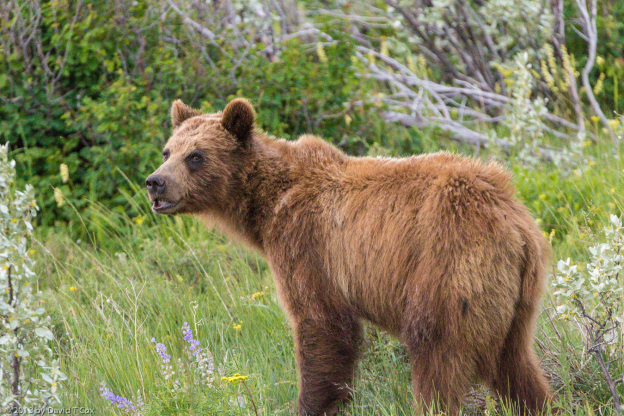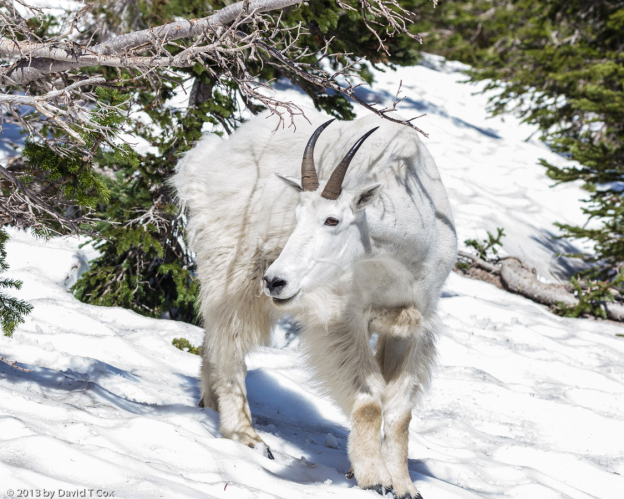All Photos Are Below the Travelogue Text
Click on Any Photo To Open Slide Show
To print the travelogue, right click anywhere on the page. Choose "Print" from your browser dialog box. You can choose Save to PDF in the browser print window.
Share your thoughts.
Email Dave - coxdavid55@hotmail.com
Hello everyone. It has been almost 3 weeks since last I wrote from Livingston, Montana. I have not had internet access sufficient for email the last 11 days. I stayed in Livingston 3 days, photographed local birds and recovered from the 10 days of partial isolation in Yellowstone. From Livingston I traveled just a short distance to Bozeman, Montana, a delightful old town with a neat downtown of original brick buildings and a number of interesting restaurants. The town also sports the Museum of the Rockies, with a dinosaur display to compete with the Dinosaur Center I wrote of from Thermopolis, Wyoming. The Bozeman museum is the home turf of the famed dinosaur expert Jack Horner who advised on the 3 Jurassic Park movies. The Bozeman Museum has more dioramas and fewer complete skeletons than Thermopolis, although it has more Tyrannosaurs than anywhere else in the world; I enjoyed the museum in Thermopolis better, but include a couple of photos from Bozeman including a shot of the world’s only life-size bronze Tyrannosaur, which stands guard out front.
From Bozeman I traveled up to Helena, the capital of Montana, where I stayed several days and visited Hauser Lake just below the headwaters of the Missouri River (the real Mississippi). From Helena I finally drove up to the east side of Glacier National Park, where I spent 9 days searching for better photo opportunities for grizzly bears and mountain goats, among other animals. The last couple of days I succeeded on both, as well as enjoying some of the best bighorn sheep encounters ever.
I stayed my first and last several days in St Mary, a tiny town at the east entrance to the park along the St Mary Lake, which sported a couple of RV camps where at least I had restaurants, grocery store and electric power for my computer, although the purported satellite internet connections never were sufficient for more than the occasional ability to open up some email. I timed my arrival for the day before June 21; the 21st is the earliest day for opening the famous “Going to the Sun” road through the Park; that road is considered one of the engineering marvels of the early 20th century, and, as it travels over Logan Pass through the continental divide it cuts on the edge of sheer rock cliffs, leaving little room for 2-way traffic, and has dozens of little waterfalls cascading right onto the side of the road (helping keep the cars clean). The road is limited to vehicles under 21 feet in length. The views are spectacular, and about a third of the Park area is considered alpine – above tree level. Many of the lakes are filled with glacial water, which takes on the unique deep blue-green coloration. The Park is home to the highest density of grizzly bears in the lower 48 states, but these and other wildlife are seldom seen from the much traveled road through the Park.
I traveled 4 times to Logan Pass in hopes of getting close to Mountain Goats. The Pass seemed perpetually foggy and rainy, with howling winds. I tend to go out for wildlife before 6 am; on average I seldom see other tourists until well after 8 am. Rather than the goats, on my second early morning at the Pass, when I had the area entirely to myself, I had 5 bighorn sheep rams appear out of the fog and come running at me across the visitor center parking lot. Scared me quite a bit; I found out later this group of rams was called “the bums” by Park Service, because they were accustomed to approaching tourists in hopes of food, and were apparently addicted to licking up antifreeze from the pavement, not a healthy habit. Despite, or perhaps because of, their habituation to humans, they had become aggressive and dangerous. I also lucked into one of those really idyllic wildlife scenes (every wildlife photographer has dream shots), photographing bighorn rams on a snowy crest, perfectly posed, just lighted by early sunrays, with deep fog behind.
In the various high alpine areas I also routinely encountered hoary marmots, delightful creatures constantly climbing the impossible snow slopes searching for food under every open ice hole around boulders. They have many territorial battles presumably at the contested borders of their protected home turf. Amusingly I heard a number of tourists referring to them as beavers, although they are scrambling over snow, at tree line, with nary a damable stream in sight – one gentleman insisted one was the very rarely seen wolverine. Also common at all elevation levels were the beautiful Columbian ground squirrels, considerably larger than most other ground squirrels.
I spent three days at a campsite in Many Glacier, a glacial valley with the highest concentration of, and best chance for, bears. My first day I hiked a short distance on the Swiftcurrent Pass trail, and encountered 4 more huge bighorn sheep rams (these were completely different sheep from Logan Pass) which aggressively forced me off the trail; it was a little uncomfortable, but another terrific photo opportunity. I spent years before I succeeded in my first close bighorn sheep encounter, and now, within 3 days, had several very close encounters; I did not expect Glacier to be a prime spot for bighorn. Although I spotted large grizzlies at a great distance as at Yellowstone, it was not until my 5th day that I found a couple of relative young and small grizzlies, a mated pair, close to the road into Many Glacier, which I then managed to locate 3 days in a row. They rooted under rocks in the same small meadow every early morning, and were usually almost impossible to see from a car while driving by; this permitted me to, in effect, have them to myself for several hours on two different early mornings (the secret is to never allow any other passing tourists to see you pointing a camera, or staring in a single direction – if they do, they will pull over to see what you are observing, and then you quickly create a “bear jam” – if not, they slow down and assume you are just looking at the mountains). Although not yet grown to massive size (grizzlies in Glacier never get to the huge size of the bears farther north in Alaska), I at least partially satiated my desire for grizzly photos. I will keep looking for the “big” ones to be close enough for decent shots.
In the Many Glacier Valley I also got close encounters with mule and whitetail deer, and occasional moose. Although I could find mountain goats daily by glassing the high ridges, as in Yellowstone they were from 1200 to 1600 meters away (close to a mile). My 8th morning I returned to Logan Pass, and someone alerted my to a short boardwalk, still under snow, just below and to the west of the pass, at the base of one of the mountain ridges where I had sometimes spotted distant goats. I spent two hours at the site, and was rewarded with a single goat approaching close enough for some good photos. As with the bighorns, the goat seemed accustomed to human presence, and I suspect it had occasionally gotten food handouts.
Being at the Canadian border, I got in touch with my childhood friend, Ken Pease, with whom I grew up in India (in the 50s and mid-60s) – he lives just a few hours north near Calgary. I made arrangements to park my RV at the campsite in St Mary, and drove across the border and now am visiting Ken and his spouse Anna in their lovely home on over 4 acres of grassy property about 20 kilometers west of Calgary. We are having a great time reminiscing and, as normal, discussing and occasionally solving great world problems. When I return to Montana in a few days, I probably will spend a few days on the west side of Glacier (have been mostly on the east side until now), before traveling on eventually into Idaho.
I have reverted to loading the photos onto Skydrive, as it seems to be functioning well again, and this way my emails presumably are small files for easy download again; I believe you can download all the photos as a single file from the folder link below the thumbprints if you wish to save them, or can view them as a slideshow or open individually. Let me know if this works ok or if you prefer another method. I have included photos of birds from Livingston to St Mary, including a common crow protesting my approach to its nest, the “early-bird” American robin with breakfast, cedar waxwing, grey catbird, cinnamon teal, yellow-headed blackbird, common merganser and red-naped sapsucker; a couple of photos from the Bozeman Museum of the Rockies, and then the Glacier pics of a Columbian ground squirrel, a hoary marmot, various bighorn rams, a mule deer buck and moose, both with antlers in velvet, the grizzlies and the mountain goat, as well as a scenic of Goose Island and a stitched panorama of the east side of Logan Pass. Later. Dave
- Bighorn Sheep, Logans Pass
To print the travelogue, right click anywhere on the page. Choose "Print" from your browser dialog box. You can choose Save to PDF in the browser print window.
Share your thoughts.
Email Dave - coxdavid55@hotmail.com


